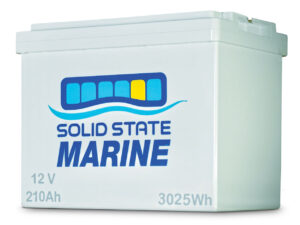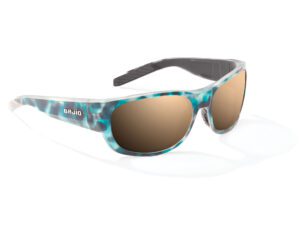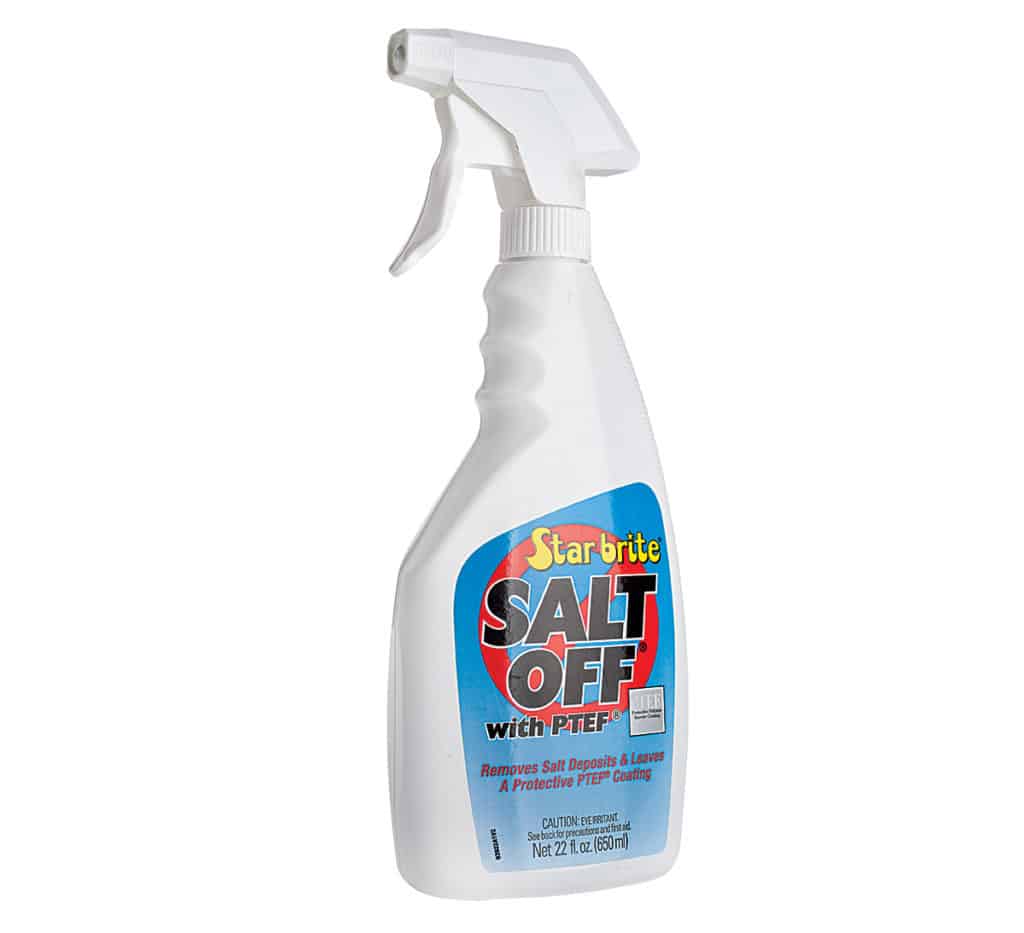
Star brite Salt Off with PTEF
Star brite Salt Off with PTEF
$10.49
This iteration of Salt Off is premixed in a refillable pump-spray bottle. To refill, use 1 ounce of Salt Off concentrate to one bottle of water. Star brite markets a number of products with PTEF, a form of Teflon coating, and we’ve found them effective in blocking stains in deck washes and improving gloss in wax.
Observations: It removed salt and suspended rust more quickly, probably due to a higher concentration in the premixed bottle. We would select this product for gear like reels, tackle and dive equipment.
Specs
Dilution: Prediluted
Quantity: 22 ounces
Gallons Per Ounce: Not applicable
Rust Protection: It slowed rust for up to an hour. However, 24 hours later rust was equal to the control steel.
Application: 3/3
Gal./Oz.: 2/3
Cost/Treat: 2/3
Rust Prevention: 3/3
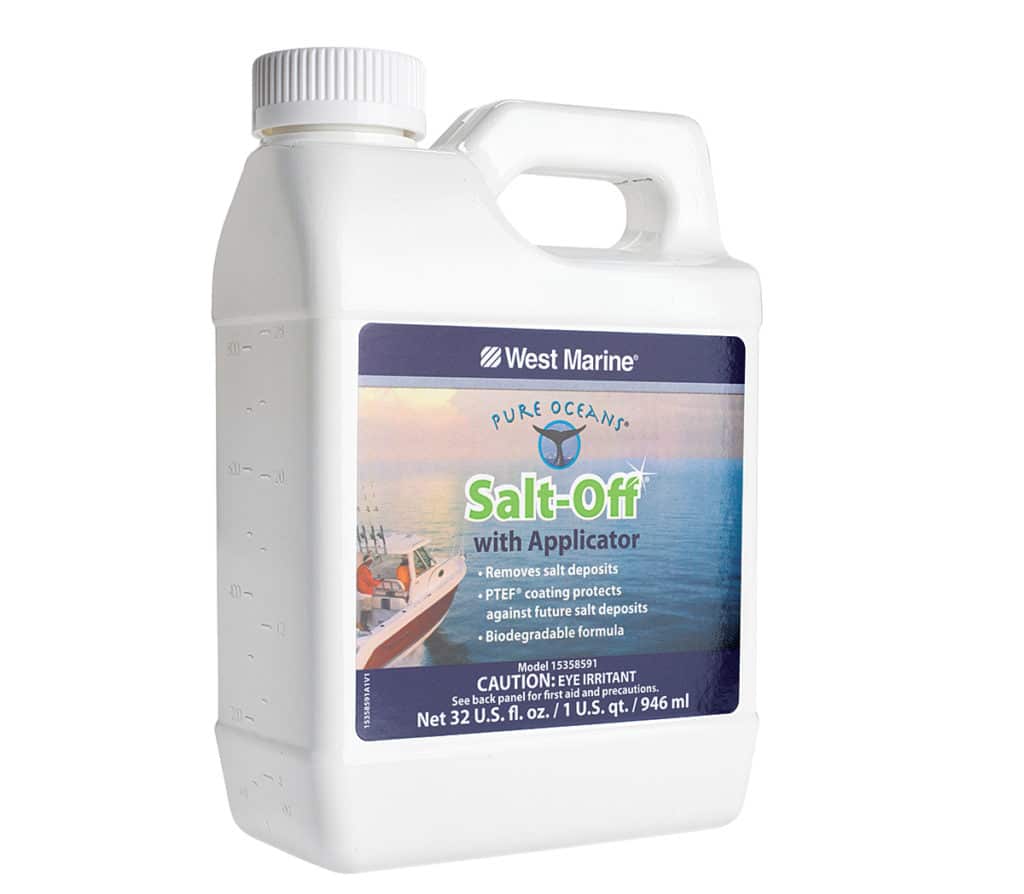
West Marine Pure Oceans Salt-Off
West Marine Pure Oceans Salt-Off
$41.99; westmarine.com
Pure Oceans chooses chemicals and packaging to minimize the environmental footprint. A lower dye content means fewer inert ingredients. It contains PTEF, a corrosion and stain inhibitor. A surfactant foams to help the product cling.
Observations: The lighter dye appeared more diluted but proved to be equally effective. Dual valves in the applicator preserved chemicals at rest. The 2- to 4-ounce-per-gallon concentration was unmeasurable in the applicator.
Specs
Dilution: 2 to 4 ounces per gallon
Quantity: 32 ounces
Cost per Gallon: $5.25
Rust Protection: One hour after application minimal rust had returned; 24 hours later rust was comparable to untreated steel.
Application: 3/3
Gal./Oz.: 3/3
Cost/Treat: 3/3
Rust Prevention: 2/3
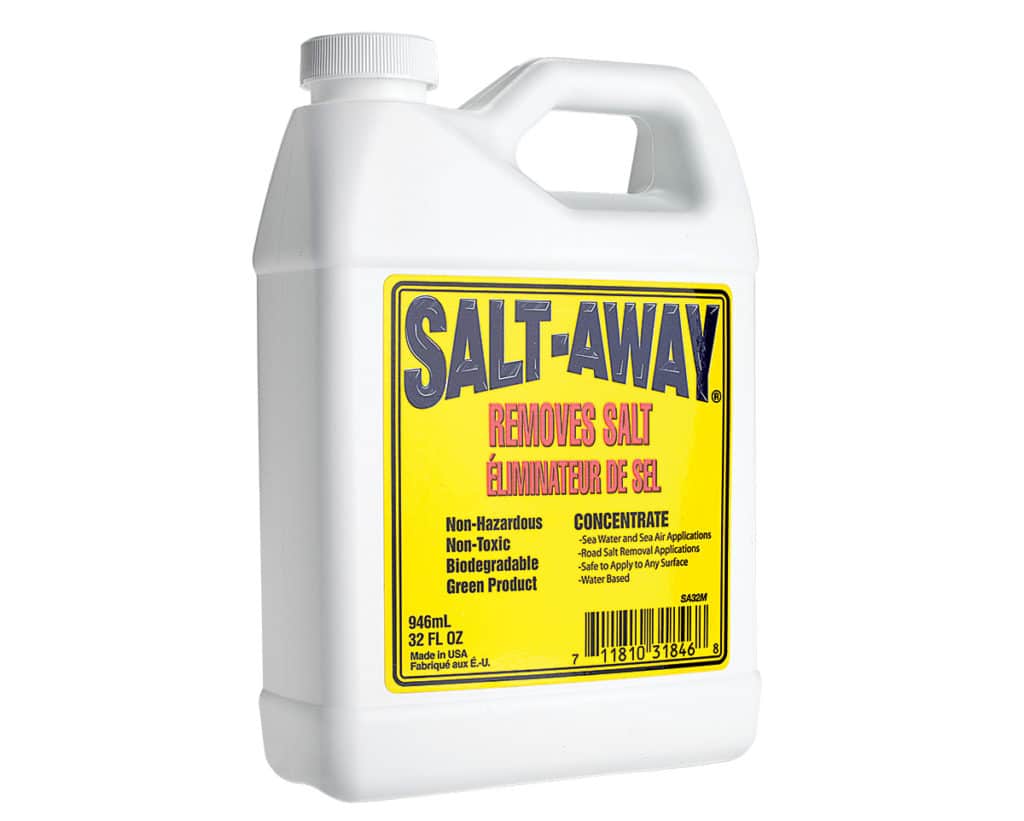
Salt-Away
Salt-Away
$52.99
The product contains rust inhibitors and surfactants to foam and lift salt-crystal applications, and clings to surfaces. If left to dry, it encapsulates salt, preventing additional corrosion. A rinse aid helps in sheeting action to remove spots.
Observations: The darker dye persisted longer in the solution, offering more reassurance but no additional efficacy in our test. The 2- to 4-ounce-per-gallon concentration was unmeasurable in the provided applicator.
Specs
Dilution: 2 to 4 ounces per gallon
Quantity: 32 ounces
Cost per Gallon: $6.64
Rust Protection: One hour after application minimal rust had returned; 24 hours later rust returned equal to the control steel.
Application: 3/3
Gal./Oz.: 3/3
Cost/Treat: 2/3
Rust Prevention: 2/3
Salt is insidious. The damage it causes to the metal, paint and gelcoat on your boat is irreversible. That’s why boaters worth their salt who navigate in the brine wash their boats and flush their motors’ cooling systems immediately — with water at least.
A Primer on Rust
There is a nasty little secret about rust and salt. Salt doesn’t really cause the corrosion, oxygen does. Salt is just there to speed the process. Rust, as any eighth-grade chemistry teacher will tell you, is a result of oxygen and iron molecules combining to cause iron oxide. Salt clings hygroscopically to steel and draws water to itself, which, in turn, causes iron ions and oxygen ions in the water to combine more efficiently and at a faster rate. That’s called oxidation and it looks like rust. On raw steel, rust can actually creep up in a matter of minutes. Long term, the layer of oxidized metal holds water, which accelerates the oxidization, causing the steel to pit and eventually weaken. Leaf springs on trailers are particularly vulnerable to this corrosion. And it can happen to aluminum too, so arches, tops and the inside of many motors are also critically at risk.
Yet water is the first line of defense against rust. Why? Because it dissolves the salt and allows it to drain away. Once the salt is gone, the water still fosters corrosion but at a slower rate. Fortunately, it dries quickly, and the process is slowed — but not stopped. Even when the water is gone, oxygen and iron still combine to cause rust and corrosion.
How We Tested
There are several products on the market formulated to hinder corrosion. We wanted to compare the effectiveness of the product itself and its method of application.
First, to test the applicators included in the concentrates, we filled each with the same amount of liquid and turned on the hose. We caught the mixture in buckets to see if the mix was accurate and to see how long the spray continued.
The spray bottle is intended for more localized use, and we tested it for ease of use, controllability and appropriateness for the intended jobs.
Salty Business
We used two flat steel bars and sanded them as bright as possible, removing rust. We taped off four sections of one bar; one section for each product, plus one for vinegar — a popular home remedy for removing salt that proved to remove salt and rust the best, but it allowed them to return far too quickly.
We sprayed the steel bars with salt water and let them stand for an hour, noting the growth of rust. Then we sprayed down the test sections with the salt removers. The control steel was rinsed with plain water. We hoped to be able to observe a distinction between the water-rinsed steel and the steel rinsed with salt-removing products.
How We Scored
Ease of Application
Concentrates: The applicator lasted a reasonable amount of time and treated enough water to wash a 20- to 30-foot boat.
Maximum score = 3
Spray Bottle: The spray stream was controllable, not wasteful, and appropriate for reels, electronics and more.
Maximum score = 3
Gallons Per Ounce:
Most = 3, less = 2
Cost Per Treatment:
Assumed 15 gals. Most = 2, least = 3
Rust Prevention:
Demonstrated a clear advantage in inhibiting rust one hour later:
Best = 3, least = 2

